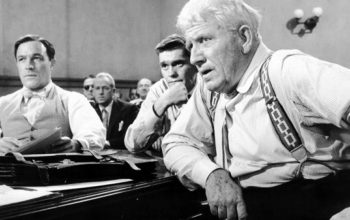On Caloric Fluid

| How does heat work? Ask a scientist today, and they’ll tell you that heat is a form of molecular motion. Molecules jiggle faster when they are hot then when they are cold. Put some ice in a glass, and the jiggling water molecules will excite the sluggish ice molecules, warming them — but they lose energy in the process, slowing down and cooling. But way back in the late 18th- early 19th centuries, there was another theory: caloric fluid. Substances contain different amounts of an unseen fluid that flows from hotter objects to colder objects. It’s not difficult to see why this seemed like a reasonable theoretical basis for heat, because it certainly feels like that sometimes. Imagine the sensation of being in either warm water or icy water. It’s easier to conceptualize what is happening as heat flowing into or out of your body, than to imagine it as your component molecules jiggling faster or slower in response to the molecular jiggle of the water. Scientists were so certain of this theory that Caloric was even in included on early tables of elements, such as the one above. The idea of caloric was connected to an even earlier idea, that of phlogiston. This held that, some substances contained a substance that was released into the air when they burned. This is in the opposite to our current theory in which oxygen from the air combines with the burning substance in a reaction that gives off heat and light. Indeed when oxygen was discovered, some held that it was de-phlogistonated air, and it made fires burn hotter and brighter because it drew out more phlogiston than regular air which already contained some phlogiston. Again, you can see this on the list of chemicals above, |

The thing about caloric theory is that it actually had some explanatory power. The study of heat was particularly essential at this time due to the increasing importance of steam engines. The French scientist Nicolas Carnot worked out a great deal of the theoretical bases of how steam engines worked, based his work on the caloric theory. In spite of his flawed premise, his theoretical model for how heat engines work is still used in designing modern engines.
In spite of its successes, there were things that the Caloric Theory could not explain. German scientist Count Rumford observed the work of boring canon barrels in Bavaria and noticed just how much heat was generated by this process. Caloric was supposedly a conserved substance – that is, there was only a finite supply of caloric in any given thing. The friction of the boring process seemed to be able to release more ‘caloric’ than even a large piece of metal could hold. Even so, it was a long time before the notion (suggested by Rumford but developed by others) that heat is a form of motion was accepted.

But what if the caloric theory was correct? Might it not be possible to extract caloric fluid from substances rich in caloric. In this case, fire becomes superfluous as a means of creating heat. It could be stored in insulated containers and added directly to water to make it boil.
This is one of the key conceits of my novel Champagne Charlie and the Amazing Gladys.
Steampunk technology is made possible because steam engines and
turbines are able to be far lighter in weight, lacking a firebox.
Further, they need merely be equipped with tanks of this near weightless
substance, instead of piles of coal.
The technology for the
extraction process is controlled by the sinister Lord Grimsdale, a man
with an agenda that goes beyond more efficient steam power; possibly
reaching all the way to the moon itself. Because if there’s one
similarity between our real world and my fictional one, it’s dodgy rich
blokes building rockets.



